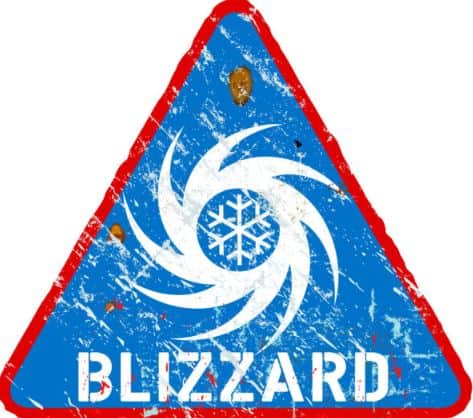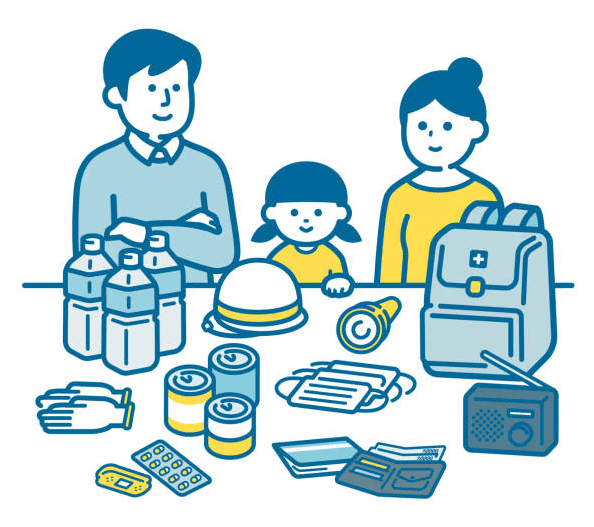How To Prepare For Food Shortage in 2024

Just in the last few years, the risk and existence of food shortages across the globe have skyrocketed, especially in the aftermath of the COVID-19 pandemic, the Russo-Ukrainian War, and the worsening of Climate Change predictions.
Today, the global food supply chain – once robust and reliable – continues to show signs of strain, and this has been a strong contributor to the inflation crisis.
So let me guess: you’re here now because you’ve started considering the possibility of preparing for a serious food shortage, right?
With regional wars, disruptions in the supply chain, the threat of global food shortages, and stubbornly high prices, the importance of individual preparedness is certainly increasing by the minute.
Imagine having a pantry stocked with non-perishable foods, a garden filled with fresh produce, and the peace of mind of knowing you’re ready for any kind of food crisis.
If you appreciate that thought, then take a look at this guide to find out how to prepare for a food shortage journey, ensuring that you and your loved ones remain safe, healthy, and secure.
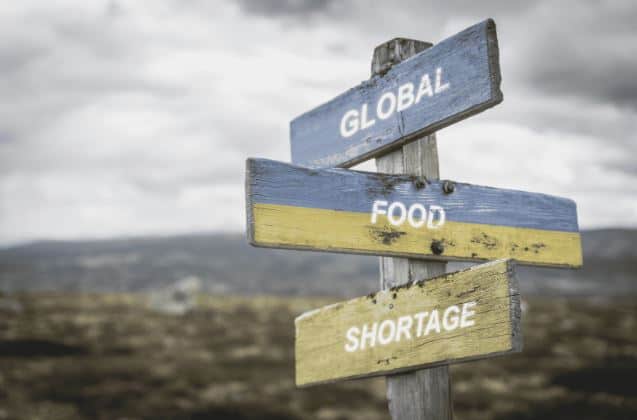
The Landscape of the Global Food Shortage
A food shortage, whether it’s a global food shortage or localized, means the demand for food items surpasses the available supply.
This can impact prices across the board, from farming and fishing industries to processing and distribution, until it reaches the end consumer through retail or services.
Factors like labor shortages, wars, natural disasters, and other supply chain issues can exacerbate such a crisis.
In recent years, the threat of such shortages has become increasingly palpable, pressuring civilians like you and me – even in wealthy countries like the US – to start getting ready.
The Intricacies of the Food Supply Chain
The supply chain is a complex web that spans across multiple countries. Disruptions in one part can lead to ripple effects, causing shortages in other countries. Understanding this chain and its potential supply chain disruptions is crucial.
For example, a drought in one country can lead to a global food shortage, affecting food prices worldwide. Similarly, labor shortages or military conflicts in one region can also disrupt supply chains, leading to empty shelves in grocery stores and an incapacity to properly stock supermarkets.
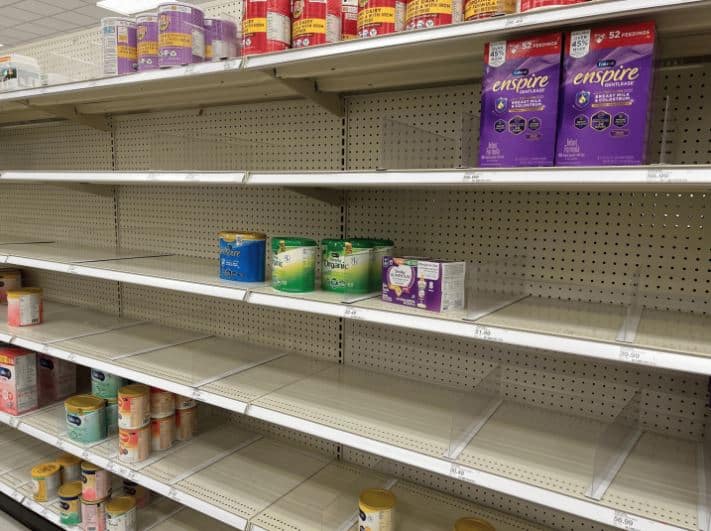
Why You Need to Be Prepared for Food Shortages
Why should you care about preparing for a food shortage? These are some of the main reasons:
Rising Food Prices: a food crisis can cause prices to soar, making everyday items unaffordable. This is something we’re all quite familiar these days.
Ensuring Sufficient and Diverse Food: sustaining your family adequately may prove to be difficult if fresh food and other foods start becoming scarce.
Bypassing Disrupted Supply Chains: global food shortages require reliance on local resources. This might mean turning to local farmers or even starting your own food garden.
Mental Peace: preparedness reduces anxiety during these uncertain times. Knowing you have a plan in place can offer immense peace of mind.
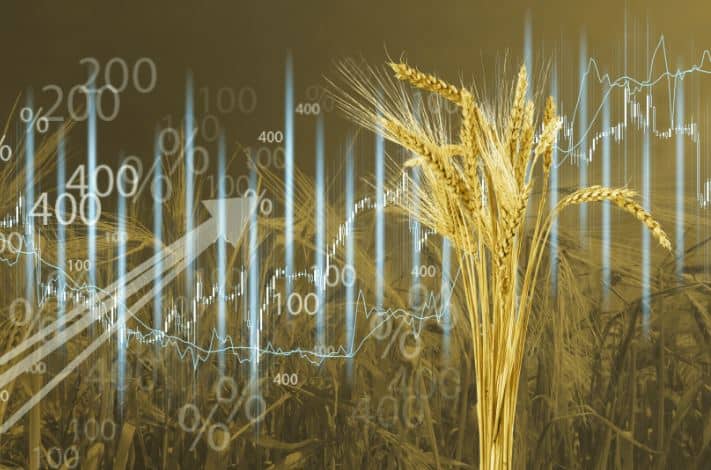
Comprehensive Guide to Preparing Your Household for a Food Crisis
Safety First
I don’t want to focus too much on this part, but to start off with, you should make sure your house is secure and assemble a good survival kit so that you’re ready for any kind of emergency.
Bear in mind food shortages can cause social unrest, which might create new criminal property threats.

Resource Stockpiling
Prioritize non-perishable foods with a long shelf life. Diversify your food storage to include a mix of grains, proteins, and healthy fats. Consider nutritious foods that require minimal preparation tools.
While having a large enough food supply can be crucial, the value of learning how to preserve foods generally cannot be overstated since it can really extend your supplies. This includes understanding the nutritional value of different foods and how to keep food fresh for longer periods.
Good examples of non-perishables for this scenario are canned foods (vegetables, fruits, protein, soups and stews), dried foods, beans, nuts, seeds, rice, pasta, oatmeal, cereal, peanut butter, honey, nuts, MREs (or the alternative shelf-stable complete meal), freeze-dried foods, protein bars, bottled water, powdered milk, and others.
In terms of quantities, a good reference is to stock at least a 2 to 4-week supply.
It is also wise to purchase water purification tablets, ensuring access to drinkable water if you face water supply issues.
Aside from just-food supplies, items like a first aid kit, portable chargers, pet food, or toilet paper are also essential. Ensure your emergency kit is well-rounded and includes everything needed to help your family overcome gradual food shortages.
And make sure to adapt to your specific needs. If you have a baby, stock up those baby foods. If you have pets, make sure you don’t forget pet food since they are family, too. And the same thought applies to elderly people, special diets, etc.
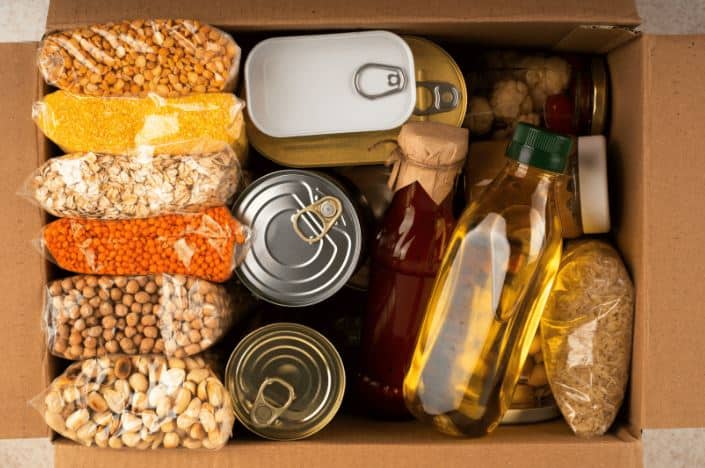
Local Community Engagement
If you have your own outdoor space that allows you to grow fresh foods, I would recommend you to start doing that today to get that nutritious, tasty, ecological, varied, chemical-free, and cheaper homegrown produce compared to the store-bought. And, of course, in case you face food shortages, it would be a significant help.
But at the same time, are you aware of how much food a person-household actually consumes each year on produce? It’s… a LOT! And it’s very hard to be able to merely depend on your garden.
For this reason, you shouldn’t hesitate to become a part of a local community gardening space. Community gardens not only provide fresh produce but also foster a sense of community, which can be very beneficial during challenging times like food shortages.
And it is much easier to find a more diverse set of healthy foods if you have access to a community of farmers with regular food production. Eating healthy foods with some diversity will help you achieve the correct balance of vitamins and minerals for your household needs.

Stay Informed
Monitor global food supply news and be alert to warning signs of food shortages happening across the globe. This involves understanding the broader picture, including geopolitical tensions, climate change impacts, supply chain impacts, and economic factors that could greatly impact food production.

Beyond the Basics: Advanced Food Shortage Preparedness
The Importance of Diverse Food Sources
Relying solely on grocery stores can be risky. Consider alternative sources like local farmers, community gardens, and even growing your own food.
In a world where food shortages occur more frequently, diversifying your food sources is a smart way to reduce your risk.
The Role of Technology in Food Preparedness
In today’s digital age, apps, channels, and online platforms can provide alerts on food shortages, offer tips on food preservation, and even connect you with local farmers.
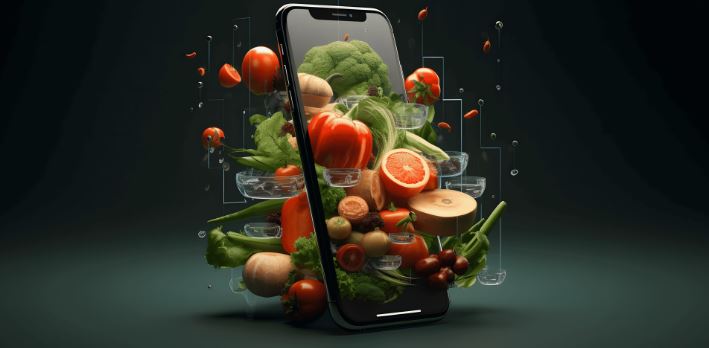
Preparing for Extended Food Shortages
For long-term preparedness, consider investing in food preparation tools, learning about food preservation, and even exploring options like vertical farming.
Understanding the nuances of food storage, from temperature control to protecting against pests, can make a significant difference in the longevity of your supplies and your capacity to reduce food waste.
When preparing for potential food shortages, long-term food storage is key.
Stocking up on non-perishable items can ensure you have a stable supply of basic essential nutrients to help your family survive an impending food shortage.
But the truth is you also need a certain level of food diversity to ensure a healthy diet, and that is where homegrown produce and local community gardening spaces can play a key role in ensuring you have enough fresh food.
The Role of Self-Sustainable Practices
In these times of uncertainty about upcoming food shortages, establishing self-sustainable practices becomes essential.
One of the key components of self-sufficiency is cultivating your own fruit and vegetable seeds.
By doing so, you not only secure a normal food supply but also actively contribute to the seed production process harvest.
Your self-sustainable garden space serves as a source of fresh produce, reducing your reliance on external sources and providing a sense of food security.
It’s a proactive step towards ensuring that your family has access to nutritious food during challenging times.
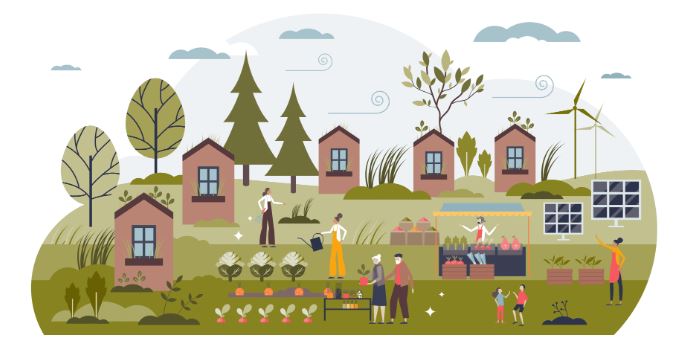
Wrapping Up and My Experience With Food Shortage Preparedness
The threat of severe food shortages coming in the next few years isn’t just a crazy scenario, it is a real possibility.
My journey into preparing for such a scenario started in the COVID-19 Pandemic when I moved into a suburban house, and this process has been really enlightening for me.
I’ve been a city person most of my life, and I had basically no idea how to grow any kind of produce.
Now I can proudly say that I regularly grow anything from lettuces, kale, eggplant, zucchini, pumpkins, tomatoes, strawberries, blueberries, leek, and so many others.
And, in my orchard, I grow oranges, lemons, apples, pears, peaches, mangoes, plums, avocados, persimmons, etc.
Remember, an emergency food supply has to be diverse and sufficient to meet your family’s needs. It’s not enough to simply stock some food; you also need nutritious food that is capable of sustaining health over long periods.
Stay safe, stay prepared, and always be one step ahead. Check out my other blog posts, and reach out if you feel like it.
FAQ – Frequently Asked Questions
What kind of food should I stockpile for a food shortage?
Non-perishable items like canned foods, drieds foods, beans, nuts, seeds, rice, pasta, cereal, peanut butter, honey, MREs, freeze-dried foods, proteins bars, bottled water, powdered milk, and others.
What foods will likely be in short supply in 2024?
Spices, dairy products, eggs, seafood, grains, fresh produce, meat and poultry.
How can I adapt to global supply chain issues?
Go local as much as you can. Grow your own food, be a part of local community gardens, and meet local farmers.



